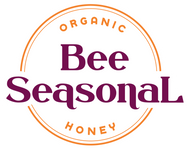Honey Facts
We put together some of the most common questions people ask us and we answer them to the best of our knowledge. If you feel your question has not been answered, please get in touch with us here.
WHAT IS HONEY?
Honey is a viscous, sweet substance produced by bees and other insects, mainly from the nectar of flowers and plants. For bees, honey is a source of energy. In cold weather or when other food sources are scarce, adult and baby bees use stored honey as food.
Forager bees collect sugar-rich nectar and return to the hive where they use their "honey stomachs" to ingest and regurgitate the nectar repeatedly until it is partially digested. Bee digestive enzymes, along with gastric acid break sucrose into the simple sugars glucose and fructose. It takes a lot of hard team-work until honey reaches storage quality. Bees place the honey in honeycomb cells which are left unsealed. They then flutter their wings constantly to circulate air and evaporate water from the honey to a content around 18%, raising the sugar concentration, and preventing spoilage. The bees then cap the cells with wax to seal them.

RAW VS PROCESSED HONEY
The definition of raw honey should be very simple: as it is in the hive. Raw honey still contains all micronutrients like vitamins and minerals. It should never be filtered and/or heated above the hive's average internal temperature.
Any honey that has been treated in a way which alters its physics-chemical composition can be considered a processed honey.
HOW IS BEE SEASONAL'S HONEY EXTRACTED AND BOTTLED?
After the beekeepers harvest the honey, the frames are brought to the main facility, where the combs are uncapped and the honey is extracted using a centrifuge.
The honey is than strained in order to remove extraneous solids that remain after the initial raw processing by the beekeeper and put in stainless steel tanks. From these tanks the honey is transferred into our glass bottles.
In order to be able to transfer the honey into the bottles we need to raise its temperature to approximately 100 degrees Fahrenheit, a normal temperature inside the hive. But don't worry, this temperature is kept for a very short period of time and does not influence the honey's properties or health benefits.

DO ALL HONEY CRYSTALLIZE?
Not all honey crystalizes.
Honey is primarily composed of two types of sugar: glucose and fructose. The ratio between these two sugars helps us predict how crystallization will occur. Honeys which contain more fructose rarely crystallize. Some examples are honeys from the Acacia family. Honeys high in glucose have a stronger tendency to crystallize over time, like Mesquite and Sunflower. Crystallization is natural and does not affect a honey’s flavor.
Another factor that influences crystallization is the water content of the honey, the more water, the slowest the crystallization rate. This content usually ranges between 15%-18% and is heavily influenced by the origin of the honey and the harvesting practices.
WHAT IS THE SHELF LIFE OF HONEY?
Honey is a supersaturated solution and, therefore, if kept properly stored, will never spoil! Also, honey has an acidic pH and contains hydrogen peroxide, which helps prevent spoilage. Bees are incredible creatures!
However, just like many other food products which contain sugar and amino acids, honeys undergo a natural "caramelization" process called Maillard Reaction. Over time, honey color will darken, and the flavors will slightly change, becoming more caramelized. That's the reason why food stores require an expiration date for honey.
WHY SHOULD INFANTS YOUNGER THAN 1 NOT BE GIVEN RAW HONEY?
Raw honey is a natural product and might contain microbes that can be harmful for the child's still developing immune and digestive systems. Older children and adults digestive system is strong enough to deal with these microbes.

